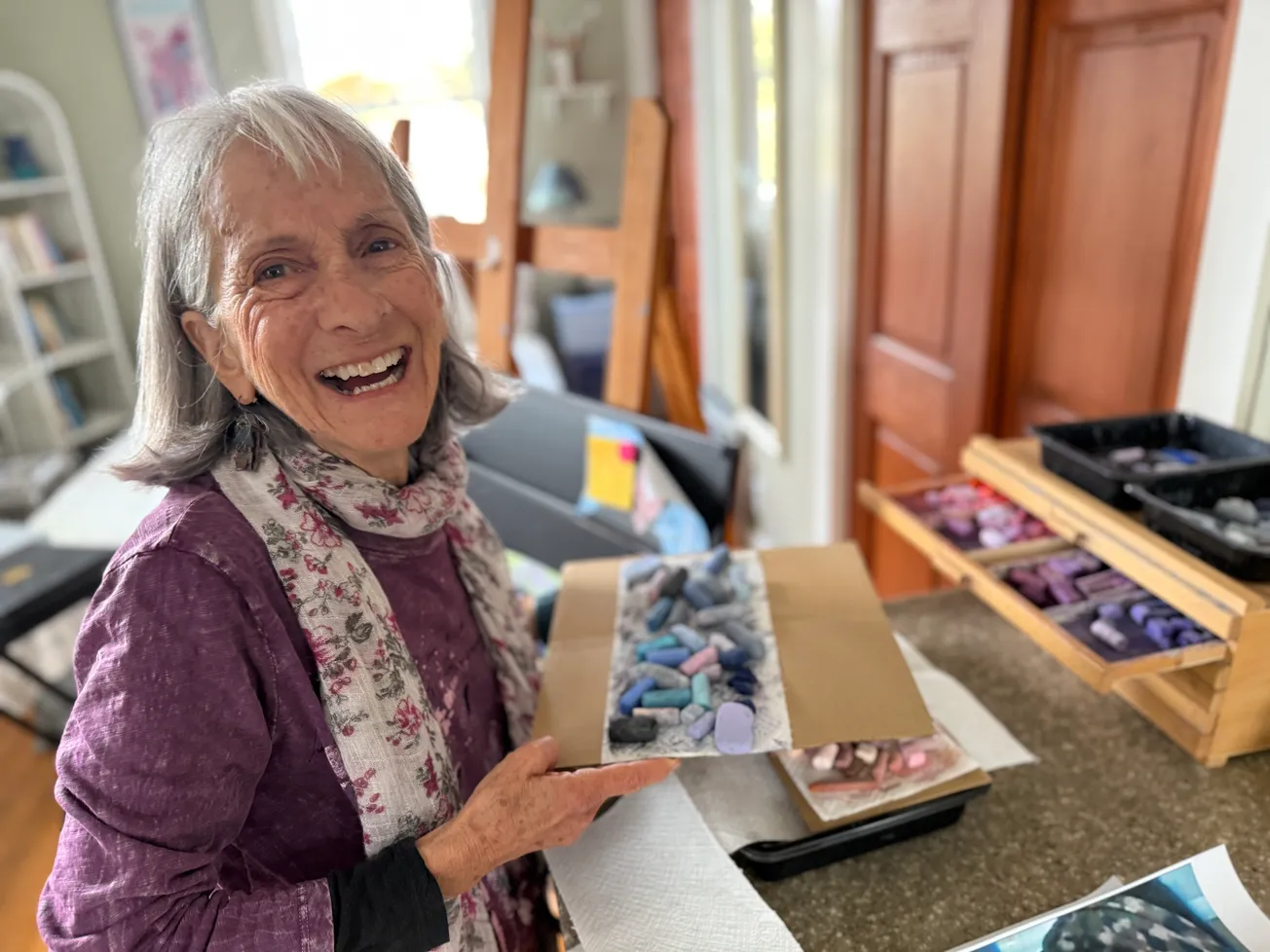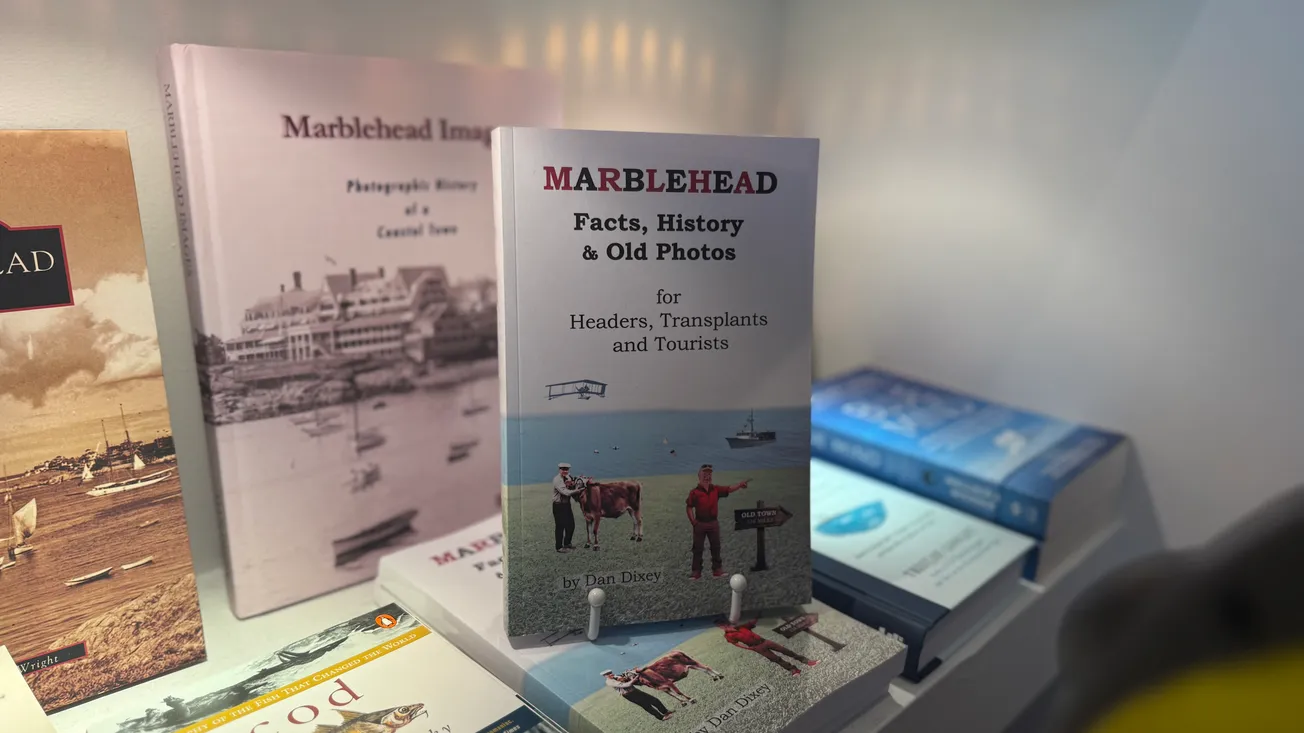Table of Contents
Cathy Marie Michael sits on the hardwood floor of her Nicholson Hill home with her legs tucked to the side, holding up a framed portrait of a young man with deep brown eyes set against cerulean blue. The pastel work captures more than a face. It holds a story of what she frames as injustice, one called to her across news cycles and courtrooms.
“Their face and their story calls to me,” Michael said. “I’m able to get on the paper the emotion that I feel from looking at them.”
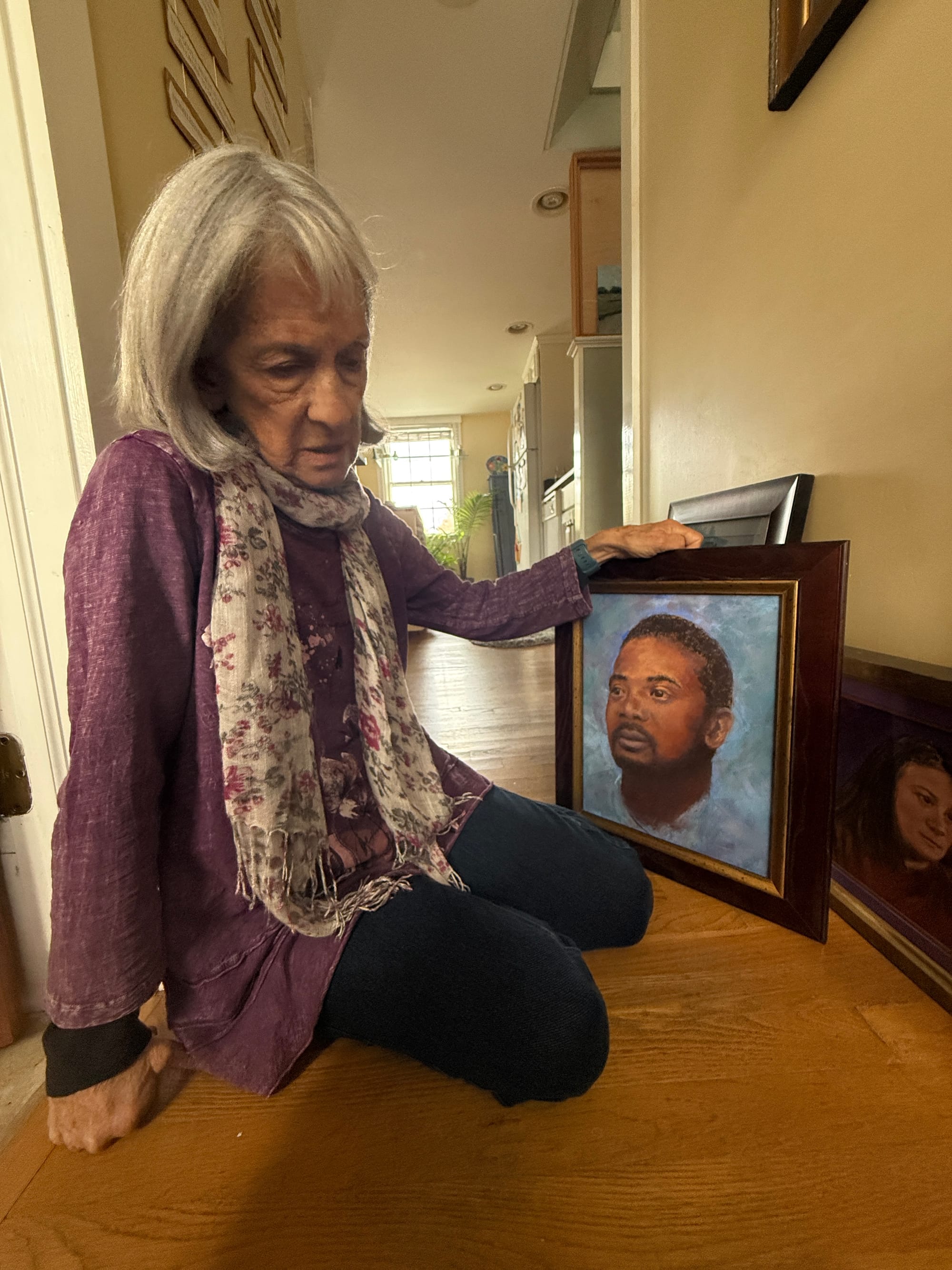
At 75, Michael will open her first solo exhibition Nov. 2 at the Unitarian Universalist Church at 28 Mugford St. The show, titled “Art as Prayer, Resistance and Joy,” features 19 portraits and abstract paintings that reflect a decades-long journey from self-doubt to artistic voice.
From doubt to discovery
Michael’s path to this moment began with a wound that festered for more than 50 years. In 1971, while home from Buffalo State College, she overheard her mother’s friend deliver a crushing verdict: “Your daughter, she has no talent.”
The words stuck. Michael avoided art classes in high school, convinced she couldn’t match her peers’ abilities. She took one photography course in college, where an assignment to grid and redraw an image surprised her with decent results. But mostly, she stayed away from creative work.
“I refused to take art class because I look around me, I said, ‘Oh, they’re so good and I can’t do that,’” Michael said. “I just didn’t think I had any talent.”
After graduating with a humanities degree in 1972, Michael worked as a secretary in New York City before hitchhiking to Vermont to ski. She spent two weeks at Killington, then moved to a farmhouse in the Berkshires, where she fasted for a week to address lifelong allergies and discovered macrobiotic eating.
“I just knew I was gonna live a long life,” Michael said. “I refuse. Kill me first if I get unhealthy.”
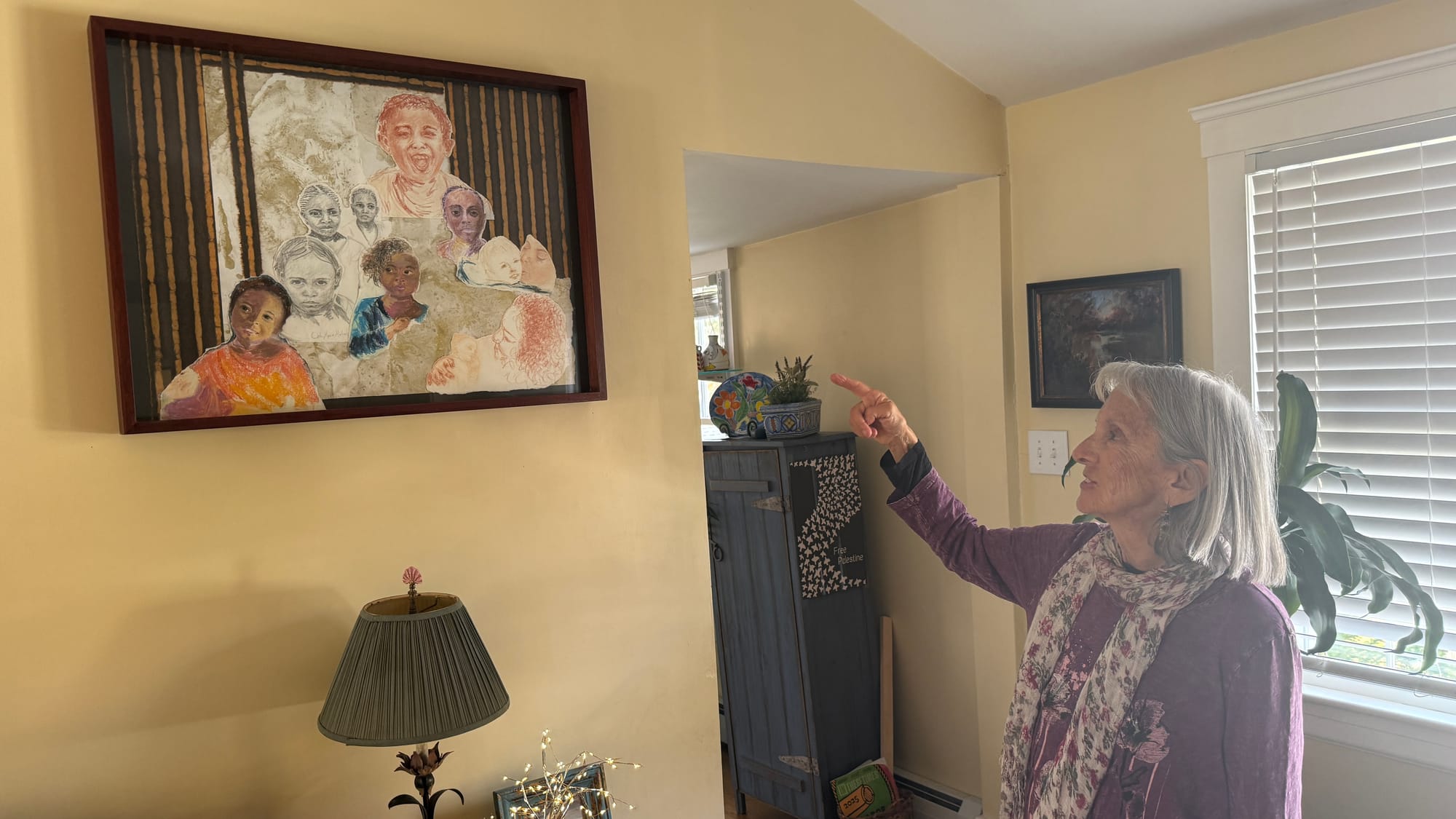
Michael moved to Marblehead 42 years ago, where she married and raised two children, now 37 and 41. In 2002, a friend asked what she really wanted to do. The answer came without hesitation: art. The next day, Michael signed up for classes at Acorn Gallery, where she spent years painting landscapes in oil.
But something shifted in 2020. She enrolled in a portrait drawing class at the Marblehead Arts Association, where the instructor had students begin with a self-portrait done without looking in a mirror.
“She said, ‘No, no, we start with a self portrait, but you’re not going to look at yourself in the mirror. You’re just going to feel and get it on paper,’” Michael said.
The technique worked. Michael began creating abstract collages of faces, then moved to more refined portraits. In April 2024, she completed a portrait that changed how she saw herself.
“I said, ‘Don’t you ever not call yourself an artist again,’” Michael said.
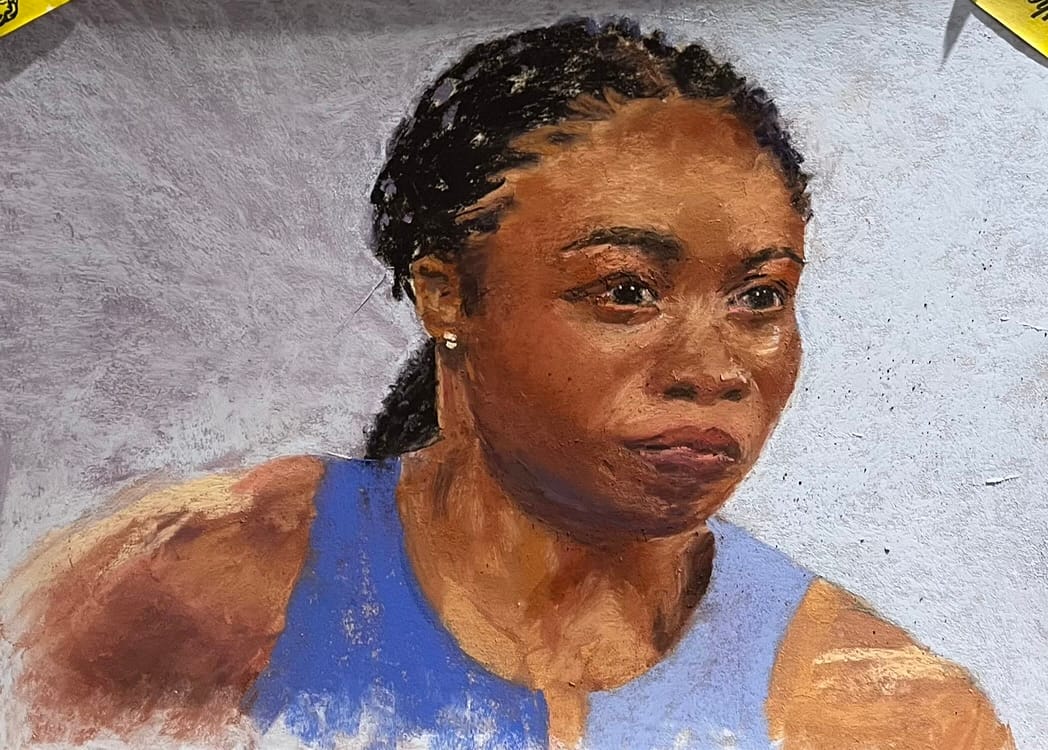
Portraits of resilience
Michael’s studio occupies a former Airbnb room on the second floor of her home, where pastels organize by color family across multiple boxes. Blues dominate, arranged from cerulean to indigo. Dark tones fill another section, essential for creating the play of light and shadow across darker skin.
Michael gravitates toward subjects whose stories reflect grave injustice. She works primarily in pastel, drawn to the medium’s depth and color saturation. She finds many of her subjects through “Democracy Now“ and similar news sources, taking screenshots until she captures an image that resonates.
“I think Black skin is gorgeous,” Michael said. “There’s so many more colors in there, and I can get more depth and more interested in it.”
Her subjects include Dortelle Williams, incarcerated since age 23 despite “complete rehabilitation.” Williams spends his time on prison phones trying to prevent youth in his old neighborhood from following his path. The portrait shows him against contrasting blue tones, the opposing colors creating depth and emotion.“This country only believes in punishment,” Michael said. “It does not believe in restoration. It does not believe that people can come around and change.”
Another portrait depicts a Texas father raising twins alone after his wife died, challenging stereotypes about Black fathers. Michael also painted a woman from Texas who had to drive to Seattle, Washington, to receive abortion care that would save her life after no doctor in her home state would perform the procedure.
The exhibition also includes a portrait Michael calls “Child of Gaza,” a young boy with luminous eyes whose image she found while watching news coverage. She takes screenshots until she captures a face that speaks to her, then works to translate that emotion onto paper.
“Look at this,” Michael said, gesturing to the portrait. “What a beautiful boy.”
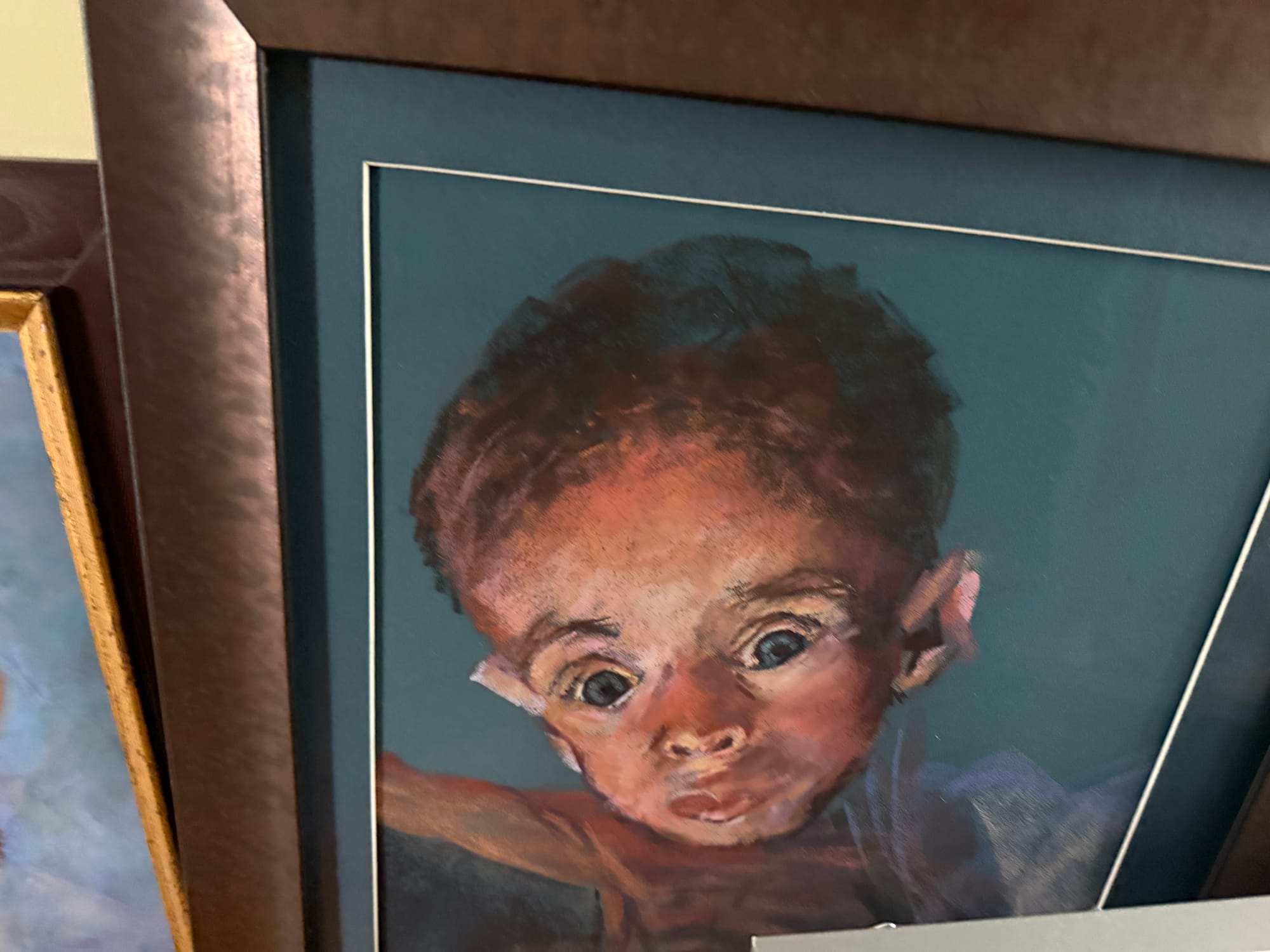
Michael’s home functions as a gallery of her evolution. Oil landscapes from the Acorn Gallery years hang alongside pencil drawings from 1973 showing a couple in formal attire. A framed painting of children’s faces demonstrates her layered, ethereal approach, with some rendered in sharp detail while others fade into ghostly background figures.
Michael won Best of Show at the Marblehead Festival of Arts in 2024 for “Motherless Twins.” She also received the Lee Smith Award the previous year for a portrait of an Iranian child, the first face she felt confident enough to complete.
“He doesn’t have a story,” Michael said of the Iranian child. “The face just called to me.”
The upcoming exhibition at the Unitarian Universalist Church reflects Michael’s commitment to giving voice to marginalized people. She will present an artist talk at 12:30 p.m. Nov. 2, sharing the human stories behind the portraits. Each artwork will display a written story beneath it, explaining the subject’s circumstances and why their face called to Michael.

The show runs through November during limited church hours: Monday 2 to 5 p.m., Tuesday and Thursday 11:30 a.m. to 3 p.m., Wednesday 11:30 a.m. to 2:30 p.m. Prints and magnetic stocking stuffers will be available for purchase.
